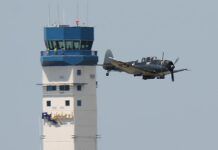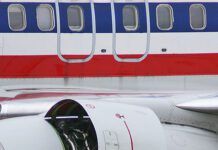
The Air Force is planning to churn out better new pilots faster using virtual reality (VR) and artificial intelligence (AI) in a simulator-intensive program that also prepares them for a new readiness posture. An extensive analysis in military.com says commanders want to get away from the traditional classroom, trainer and operational training progression in favor of more “competency-based learning” using VR for the training scenarios and AI to grade the students’ progress while they’re in the sim. “Those are two things that are poised to make a revolutionary changein how well we train pilots and in how long it takes us to train pilots,” Gen. Mike Holmes, the commander of Air Combat Command, said in an interview with Military.com. “I want to see how fast and well I can produce experienced pilots.”
New pilots will still fly airplanes and their new mount will be the Boeing T-X, which won a recent competition to supply a next-generation trainer. Most current trainers are decades-old designs but the T-X will be equipped to train new pilots for the battle scenarios of the future. Most air force operations in the last 20 years have been in largely uncontested airspace but the rise of sophisticated aerial combat equipment in countries that could be engaged in future conflicts means new trainees will be facing enemies with equipment that is on par with theirs. The Air Force is facing an acute pilot shortage and is working on retention programs to stem the flow of disgruntled personnel to the airlines.


































